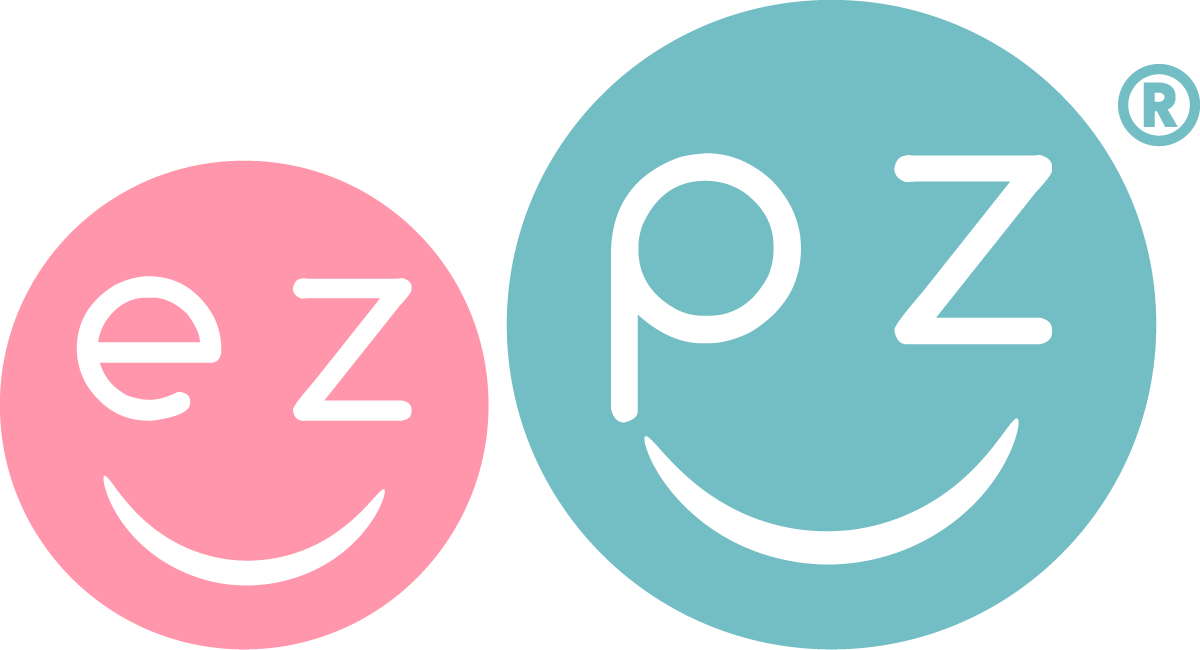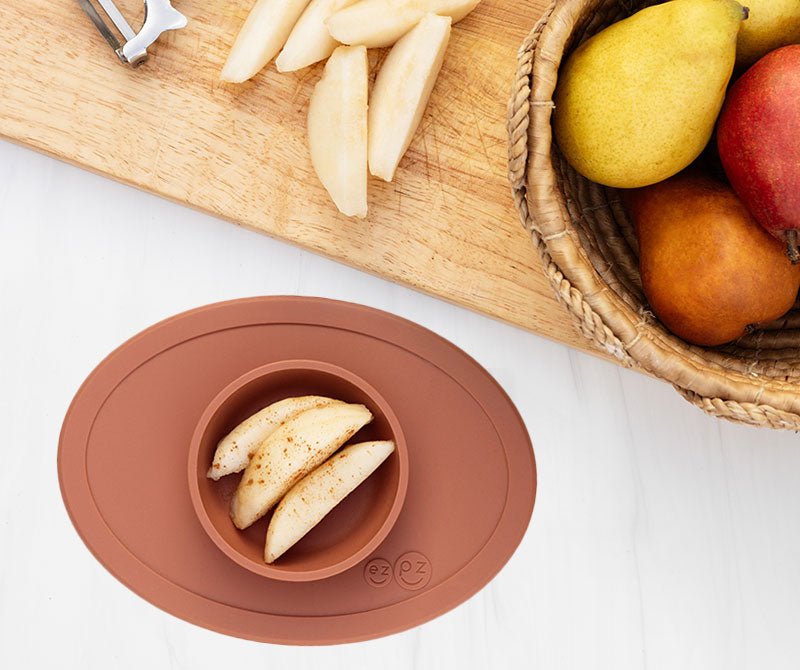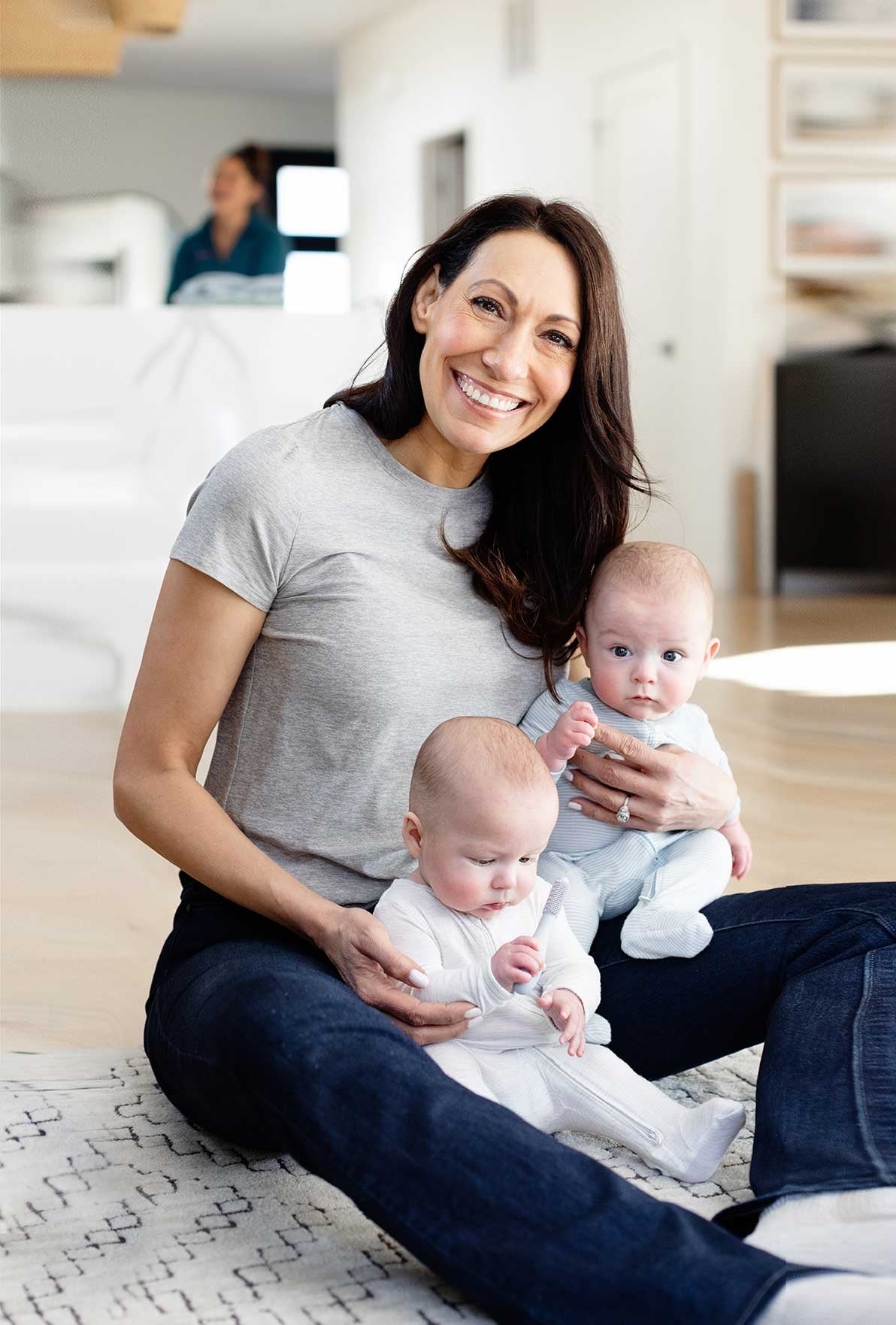I conduct Baby Led Weaning (BLW) classes for both parents and professionals, and I recommend offering fresh fruit, such as pears, as a fundamental first food for baby. Here are a few reasons why you may want to add this fruit to your baby’s repertoire.
Pears Provide a Variety of Colors: When starting solids, I recommend trying a variety of colorful fruits that have a similar taste and texture. This feeding technique makes it easier for your baby to expand their palate and avoid getting stuck in a white / tan color rut (French fries, chicken nuggets, etc.), which can quickly lead to picky eating tendencies. Pears are a great way to offer color variety, as they traditionally come in bright hues of green, red and yellow. Offering soft, overripe (+ colorful) pears can be a delicious and safe way to encourage your baby to eat a food rainbow. Here are some colorful pear varieties to try:
- Green: Green Anjou, Concorde, Seckel, Forelle (green with red freckles)
- Red: Red Anjou, Red Bartlett, Starkrimson
- Yellow: Bartlett, Bosc, Comice
Pears Provide a Variety of Textures: Offering your baby a variety of safe textures is key to avoid choking. Thus, a ripe (or overly ripe) pear is essential. To know whether your pear is ripe, check the neck of the pear by applying gentle pressure to the stem end (neck) with your thumb. If it yields to pressure, then it’s ripe and ready to be served to your baby! Here are a few textures to try with your little one:
- Pear Smoothie from a Popsicle: Pour a pear smoothie into the Tiny Pops to make a delicious frozen treat for your baby! The Tiny Pops are 1/2 ounce - the perfect size for baby's developing oral cavity.
- Thick Pear Smoothie from a Cup: Offer baby a thick smoothie by blending ½ of an overripe pear and 2 oz of breastmilk (or formula) from the ezpz Tiny Cup. This thicker texture will support the baby in learning how to swallow safely from an open cup, an important feeding milestone.
- Thin Pear Smoothie from a Straw: Introduce a thin smoothie to your older baby by blending a whole pear (removing the seeds, stem and core) with 4 oz of breastmilk (or formula) and a handful of ice. Place the mixture in the ezpz Mini Cup + Straw Training System, which will help your older baby learn how to successfully drink from a straw cup.
- Lumpy Pear Puree from a Spoon: Introduce a lumpy puree texture by placing a whole pear (removing the seeds, stem and core) in the food processor for a few seconds (or until the consistency is similar to cottage cheese). Offer this lumpy texture from a baby-led spoon so that baby can independently feed themself and meet their spoon milestones!
- Pear Spears from a Bowl: Offer your baby ripe, soft spears of pear by washing the pear’s surface (even if you plan on peeling it) and then cutting it with a knife. If it’s overly ripe, some of the skin will peel off as you wash it (which is totally fine). You want the spears to be about the length and width of an adult’s pinky finger. This shape makes it easy for your baby to hold and keep the pear on their gum line, which is important for learning how to chew and swallow. Place the spears in the ezpz Tiny Bowl, which suctions to the highchair tray making it easy for your baby to grasp the spears independently.
- Diced Pears from a Plate: Introduce diced pears to older babies practicing their pincer grasp. This developmental grasp typically occurs around 10 months of age. Serve diced pears in the ezpz Mini Mat, which is a divided plate that suctions to the table so that your baby can successfully grasp, eat and enjoy this yummy fruit.
Pears are a delicious way for babies to experience a wide variety of colors and textures! I hope this blog encourages you to choose pear as one of the first fruits your baby tries when starting solids. For more information and recipe ideas for pears, go to usapears.org. #ezpzfun



